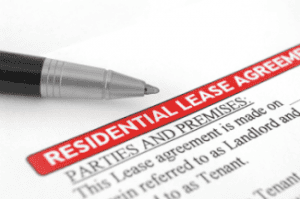The Time Has Come to Rethink and Revamp Lease Renewals

After years of double-digit rent growth and microscopic vacancy rates, the multifamily market has cooled noticeably in the first half of 2023.
With the softening, apartment owners and operators are placing a greater emphasis on resident retention, as they prioritize occupancy and can no longer expect to see an endless stream of prospects willing to pay elevated rents.
The truth is that property managers should always make renewals a priority, regardless of market conditions, because doing so offers a wide array of significant business benefits. To execute renewals efficiently and experience those benefits, operators need to revamp lease renewals and optimize their renewal processes and also think about retention more holistically.
The Traditional Way Isn’t Working
For too long and across too many apartment communities, the renewal process has unfolded largely like this: overextended site teams send out a PDF with a renewal notice 90 days before a lease’s end (and let’s be honest, 90 days is an optimistic estimate).
Due to bandwidth constraints, they often have no choice but to engage in sporadic follow-up. This results in a negative experience for residents and in communities that leave money on the table because they lose roughly 50 percent of their residents each year.
Through this process, operators typically don’t think of offering to move residents into other apartment homes within the same community, and they don’t capture data about the resident experience to inform future strategy.
Use Technology To Automate
Today, multifamily owners and operators can use technology to automate and bring nuance to their renewal process.
Automated systems can collect feedback from residents and gauge their intent to renew; this data provides better occupancy forecasting to help asset managers make rational decisions around pricing. These insights also can create more personalized and effective communications about renewals to residents.
Automated systems also can ensure the timely delivery of renewal offers featuring dynamic pricing that spur quicker decisions from residents. Lastly, automation frees up onsite professionals to contribute to the renewal and retention process in ways that only humans can — by building greater rapport with the residents they serve.
Operators should also think about renewals more holistically, and technology can support this as well.
Need a Lease Agreement?
Access 150+ state-specific legal landlord forms, including a lease.
Stated another way, renewals can be about more than keeping a resident in their current unit. Over the course of a lease, a renter’s needs can change.
Perhaps they want to stay in their current community, but for whatever reason – their roommate is moving out or they’re now working from home – they need a smaller or larger unit. Maybe they need to move to another part of the same metro area, or maybe they have to relocate to another city altogether.
These scenarios could represent a chance to move the resident into another community in the same operator’s portfolio. Technology can help apartment owners and managers identify and facilitate these moves more seamlessly, and it can help incentivize the resident to make these in-portfolio moves, further improving the relationship with the resident.
The Benefits of a Modern Approach
When operators revamp lease renewals, make renewals a priority, put the right systems and processes in place, then they will experience a host of operational and financial benefits. For starters, onsite associates will be freed up to concentrate on their many other responsibilities, and residents will have a much better customer experience.
In addition, an automated and nuanced process can lead to increased resident retention and faster renewal decisions. In turn, this results in reduced vacancy loss, reduced marketing and prospect acquisition costs, improved occupancy forecasting and better real-time pricing decisions.
For too long, renewals have taken a back seat to new leases in multifamily, and operators’ net operating income and bottom lines have suffered as a result. The time to change that is now and, moving forward, operators should always devote the needed time and resources to renewals, regardless of the market for new leases.
Stated simply, a robust and well-executed approach to renewals leads to a better resident experience, greater resident retention, more revenue and increased asset value.
Source: Rental Housing Journal















 Accessibility
Accessibility